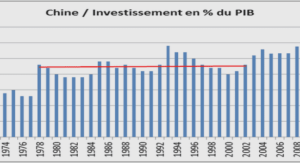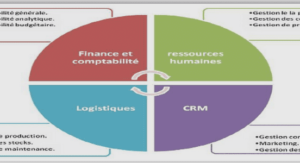Influence de la résolution spatiale du forçage atmosphérique sur la représentation numérique de la convection profonde
Dans le chapitre précédent, nous avons présenté les résultats d’une étude numé- rique réaliste de la convection profonde en Méditerranée nord-occidentale lors de l’hiver 1986-87. Cette étude nous a permis de déterminer l’influence de la résolution spatiale des modèles océaniques numériques sur la représentation de la convection, et d’examiner l’effet de ce processus sur la circulation régionale. Cependant, au mo- ment où les simulations présentées ont été réalisées, nous ne disposions pas de forçage réaliste à haute résolution, comme cela a été expliqué dans la partie 7.3.3. Pour cor- riger la sous-estimation des flux de chaleurs due à la trop basse résolution d’ERA40, une correction constante avait été appliquée de façon homogène au flux de chaleur. Dans les deux simulations étudiées, que ce soit la simulation dite eddy-permitting ou eddy-resolving, la zone de convection obtenue était trop grande et décalée vers le Sud- Ouest. L’hypothèse a été émise que ce défaut pouvait être lié à la basse résolution du forçage atmosphérique. Depuis, une méthode de downscaling dynamique (Déqué, communication personnelle) a été appliquée sur les flux de la réanalyse ERA40. Le principe en est le suivant. Nous utilisons un modèle atmosphérique de haute résolu- tion, ici ARPEGE-Climat [Déqué et al., 1998; Gibelin and Déqué, 2003], piloté par ERA40 pour les échelles représentées dans cette réanalyse, et laissé libre pour les plus petites échelles. La chronologie synoptique de la simulation ainsi obtenue suit donc la chronologie réelle, et les structures de haute résolution du flux atmosphé- rique sont créées par le modèle atmosphérique.
Deep convection is a key process for the Northwestern Mediterranean sea (NWMS) oceanic circulation and ecosystem. This process shows high interannual variability whose understanding and modeling still need to be improved. Atmospheric condi- tions, namely strong northerly winds and significant heat loss, are the principal drivers of winter deep convection, and hence account for much of its variability. These atmospheric conditions (Tramontane, Mistral, cyclogenesis of the Gulf of Ge- noa, …) are themselves mainly driven by the local orography of the Mediterranean coast (Pyrénées, Alpes, Massif Central, Rhône valley) that induces physical pro- cesses such as lee cyclogenesis or wind channeling. It is therefore essential to use an appropriate atmospheric forcing method when performing numerical studies of deep convection. Currently, high resolution atmospheric fluxes are only available for recent years (ECMWF analysis at 50 km resolution available since 1990, used by Béranger et al. [2005]).The 1986-87 winter was cold and windy in the NWMS, leading to a strong bottom open-ocean convection event [Mertens and Schott , 1998] that was monitored during a specific campaign (MEDOC87, reported by Schott and Leaman [1991] and Leaman and Schott [1991], hereafter SL91 and LS91). This period is therefore particularly appropriate to evaluate the capacity of an oceanic model to represent deep convec- tion [Demirov and Pinardi , 2007; Herrmann et al., 2008b] as well as the impact of atmospheric forcing resolution on this modeling problem, as suggested in those studies.We carried out a spectral dynamical downscaling of the ERA40 reanalysis [Simmonsand Gibson, 2000] to obtain a high resolution long-term dataset following the obser- ved chronology over the 1958-2001 period. Twin numerical simulations of the 1986-87 winter were performed using an eddy-resolving oceanic model forced at the surface by two sets of atmospheric fluxes : the first directly extracted from ERA40 and the second produced by the downscaling. The objectives of this study were to evaluate the influence of the atmospheric forcing spatial resolution on convection modeling and to underline the relevance of the downscaled ERA40 atmospheric fluxes in the framework of realistic oceanic modeling.
Dynamical downscaling of the ERA40 reanaly- sis
ERA40 is widely used to analyse the variability of oceanic and atmospheric circulation over Europe during the last decades, in particular for the period before the 1990s, i.e. prior to the high resolution ECMWF analysis. Covering the 1958- 2001 period with a spatial resolution of ∼125 km, this reanalysis is indeed one ofthe most homogeneous, high-resolution and long-term databases available to force ocean models. Moreover, since the data assimilation system constrains the temporal behavior of the atmospheric flow, synoptic events follow the observed chronology. It was however suggested that its resolution is not sufficient to realistically simulate the formation of the deep waters involved in the Mediterranean thermohaline circulation [Josey , 2003; Demirov and Pinardi , 2007; Herrmann et al., 2008b]. We tested this hypothesis by increasing the ERA40 resolution with a downscaling method.
Several statistical or dynamical methods aimed at downscaling a reanalysis were developed. Sotillo et al. [2005] performed a dynamical downscaling of the NCEP rea- nalysis [Kalnay et al., 1996] over the Mediterranean basin with a limited area model forced at its lateral boundaries and with spectral nudging over the central area. We also applied a dynamical downscaling based on spectral nudging. The method was described in detail in Guldberg et al. [2005]. The principle is to use a high resolu- tion atmospheric model in which small scales can develop freely and large scales are driven by ERA40. The synoptic chronology then follows that of the reanalysis while the high resolution structures of the atmospheric flow are created by the model.The ARPEGE-Climate model [Déqué and Piedelievre, 1995] is a global and spectral Atmosphere General Circulation Model whose grid can be stretched over the area of interest. We used a version with a pole located in the Tyrrhenian Sea and a resolu- tion of ∼50 km over the Mediterranean Basin, as in Sotillo et al. [2005]. A nudgingterm was added to the equations of the temporal evolution of the prognostic variables (temperature, velocity and surface pressure). We chose a wavelength of 250 km as the limit of the waves driven by ERA40, and followed Guldberg et al. [2005] for e-folding times used for the nudging of the different variables. ERA40 fields were updated every 6 hours and linearly interpolated in between. The ARPEGE-Climate simula- tion covers the whole ERA40 period. Air-sea fluxes (water, heat and momentum) were extracted from both simulations (ERA40 reanalysis and ARPEGE-Climate simulation) and interpolated onto the ocean model grid .




